Larissa Touloupas and her husband Ondrej Pekarovic live near Kalamazoo, Michigan where they built a straw bale house, powered by the sun. They are homesteading with fruit trees, vegetable beds, bee hives, goats, and chickens, and call the place Solfed Farms
 They have two kids, five and six, who they take to a babysitter’s occasionally. “We take the childcare when we can so we can focus on building,” Larrisa says. “They love this life,” she says of their children. “Every day we walk through the woods to go and milk our goats and pick up the eggs, and they play on the hay bales. It’s always an adventure for them here.”
They have two kids, five and six, who they take to a babysitter’s occasionally. “We take the childcare when we can so we can focus on building,” Larrisa says. “They love this life,” she says of their children. “Every day we walk through the woods to go and milk our goats and pick up the eggs, and they play on the hay bales. It’s always an adventure for them here.”
 The family has 24 acres. It’s a five-minute walk to the woods and Larissa’s in-laws, where Ondrej grew up. He was young when his family immigrated from Slovakia to Michigan farmland. As teens, he and his brother planted oaks, pines, and spruces on ten acres of the land Pekarovic and Touloupas now own.
The family has 24 acres. It’s a five-minute walk to the woods and Larissa’s in-laws, where Ondrej grew up. He was young when his family immigrated from Slovakia to Michigan farmland. As teens, he and his brother planted oaks, pines, and spruces on ten acres of the land Pekarovic and Touloupas now own.
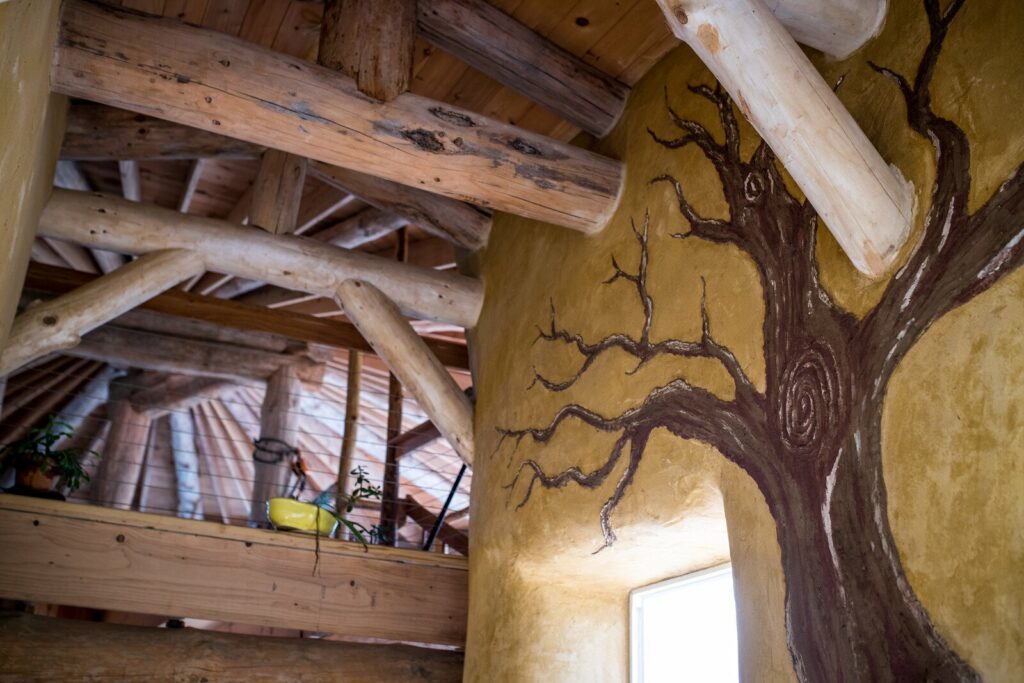 Their house is plastered with a mix of earth and clay from their land, kaolin clay, sand, toilet paper, and cattail fiber. Exposed cut wood beams and 60-year-old white pine logs help hold it up. Ondrej Pekarovic is a research engineer at Western Michigan University and one of his specialties is the study of the forces of earthquakes and hurricanes on structures, so there’s likely no Big Bad Wolf threat to his straw house.
Their house is plastered with a mix of earth and clay from their land, kaolin clay, sand, toilet paper, and cattail fiber. Exposed cut wood beams and 60-year-old white pine logs help hold it up. Ondrej Pekarovic is a research engineer at Western Michigan University and one of his specialties is the study of the forces of earthquakes and hurricanes on structures, so there’s likely no Big Bad Wolf threat to his straw house.
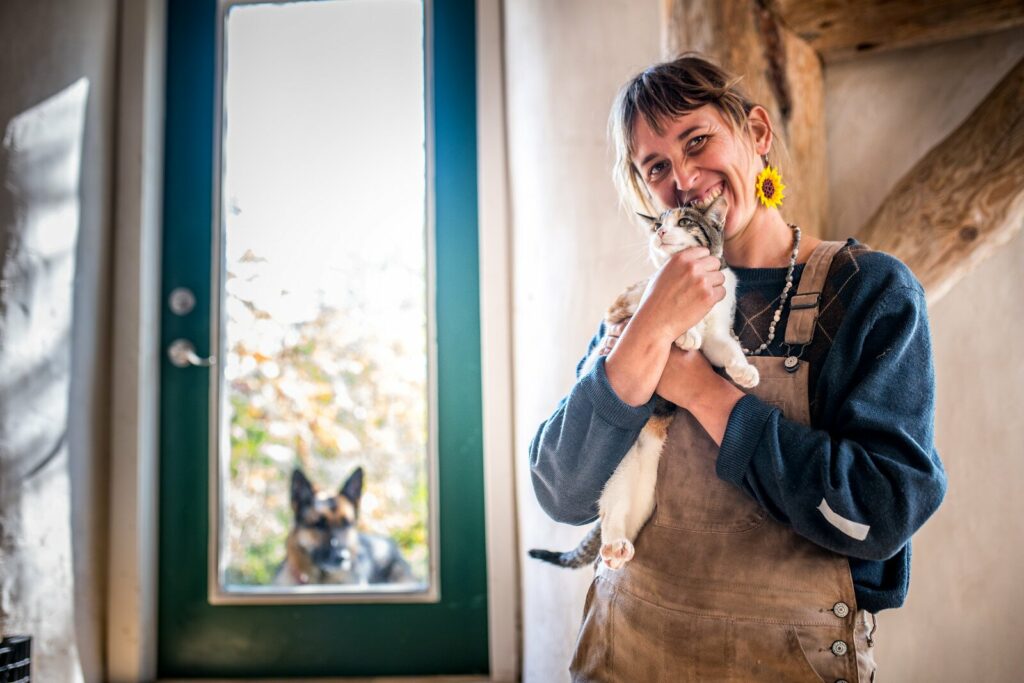 The farm is truly off the grid. They have a couple of solar panels for electricity. They have an e-bike as a second vehicle that Pekarovic often uses to commute to WMU. “I’m not a purist, and I also don’t believe that everyone can live this way,” Larissa says. She’s not sure “that it’s even sustainable or feasible, especially with solar.” They hope to get a windmill for electricity someday, she says.
The farm is truly off the grid. They have a couple of solar panels for electricity. They have an e-bike as a second vehicle that Pekarovic often uses to commute to WMU. “I’m not a purist, and I also don’t believe that everyone can live this way,” Larissa says. She’s not sure “that it’s even sustainable or feasible, especially with solar.” They hope to get a windmill for electricity someday, she says.
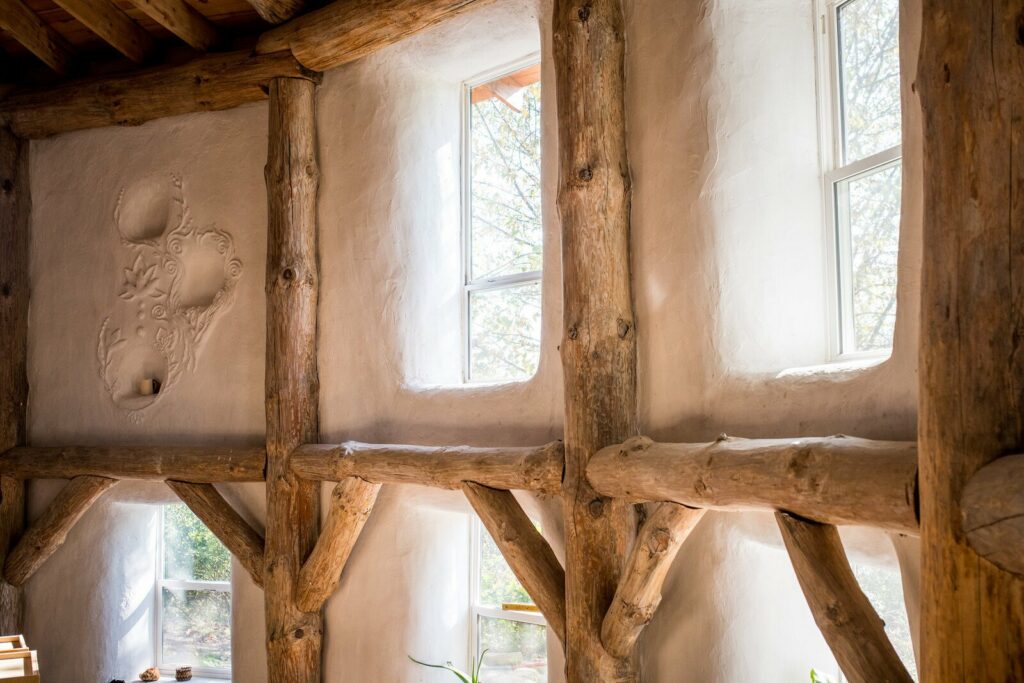 Skilled friends volunteer labor. “We’d have these big stucco parties, and I would just pray that it would be sunny because we needed it to run the cement mixer (powered by solar). It would be sunny, and then we would use it, and then as soon as we were finished the power would cut out and I’d be washing myself in the rain barrel, you know,” she says with a laugh.
Skilled friends volunteer labor. “We’d have these big stucco parties, and I would just pray that it would be sunny because we needed it to run the cement mixer (powered by solar). It would be sunny, and then we would use it, and then as soon as we were finished the power would cut out and I’d be washing myself in the rain barrel, you know,” she says with a laugh.
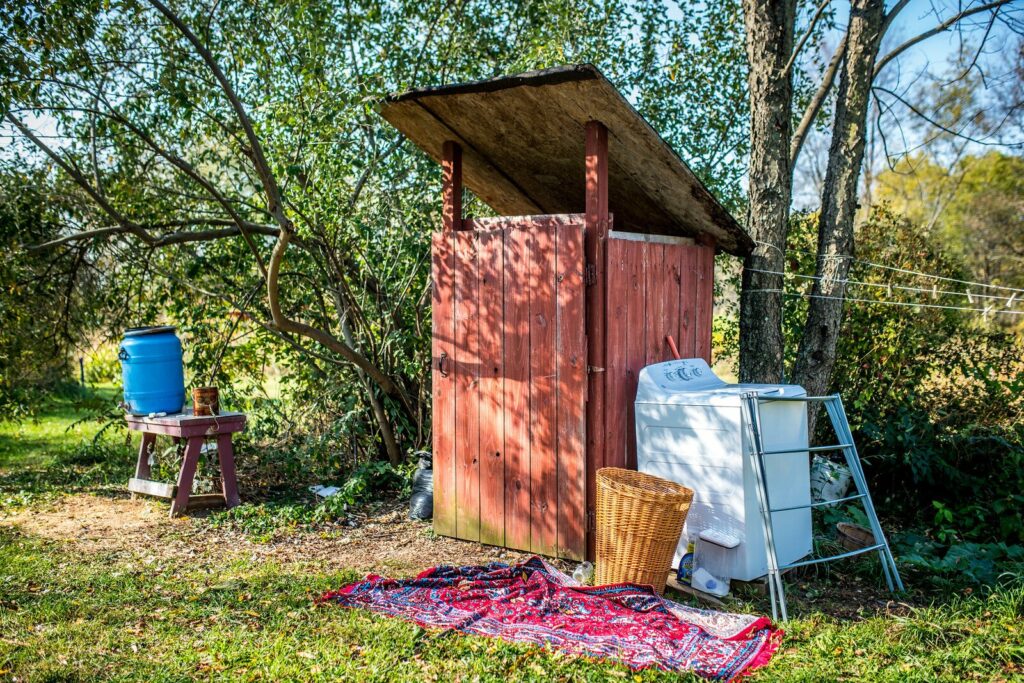 They bought the land ten years ago. They put in a driveway, put in a well, built a barn. It took five years to build the house. “And in part, it took that long because we’re paying for it as we go. We didn’t take any loans. Then, just the process of straw bale building is really labor intensive.”
They bought the land ten years ago. They put in a driveway, put in a well, built a barn. It took five years to build the house. “And in part, it took that long because we’re paying for it as we go. We didn’t take any loans. Then, just the process of straw bale building is really labor intensive.”
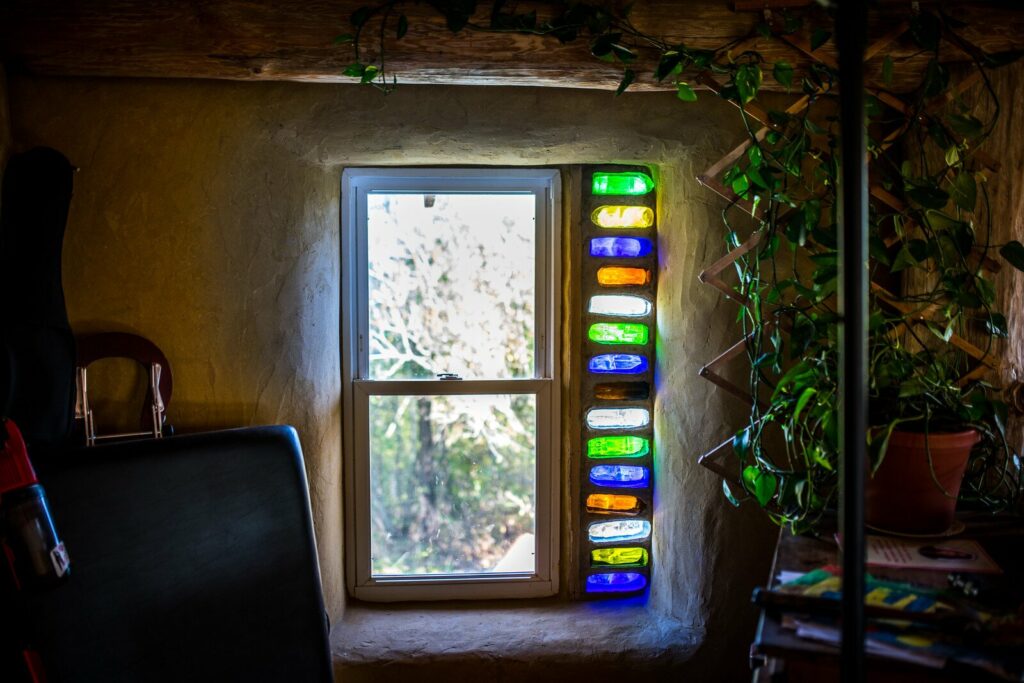 “It was really a collaboration of the universe gifting us the supplies and materials we needed, and giving us the energy and the capacity to do it, mixed with the deep desire to live what I call a low-frequency lifestyle, where the amount of inputs are low, and so the amount of money and resources that you use can be low. Therefore, you don’t need a lot of money,” she says. The land was bought with cash. “My husband was able to do that because he lived with his parents, and saved all his money.”
“It was really a collaboration of the universe gifting us the supplies and materials we needed, and giving us the energy and the capacity to do it, mixed with the deep desire to live what I call a low-frequency lifestyle, where the amount of inputs are low, and so the amount of money and resources that you use can be low. Therefore, you don’t need a lot of money,” she says. The land was bought with cash. “My husband was able to do that because he lived with his parents, and saved all his money.”
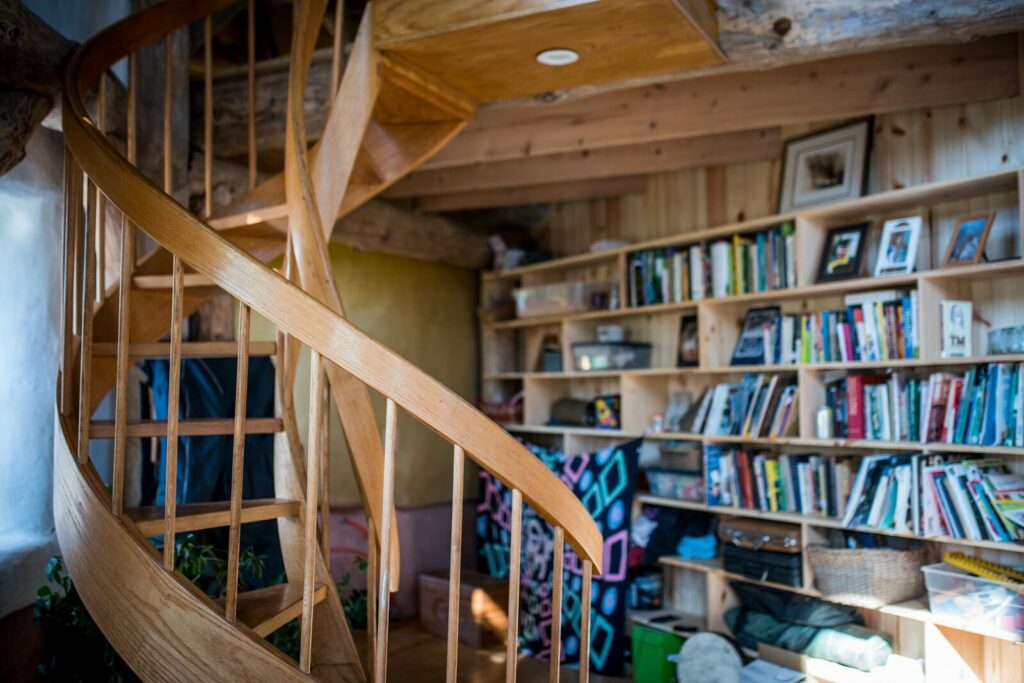 One of the first buildings on the farm is a barn with salvaged pallet wood. “We had to pry apart the pallets and pull out all the nails,” she says. The fanciest part of the structure, a perfect spiral wood staircase that would’ve been $7,000 new, they found for $1,000.
One of the first buildings on the farm is a barn with salvaged pallet wood. “We had to pry apart the pallets and pull out all the nails,” she says. The fanciest part of the structure, a perfect spiral wood staircase that would’ve been $7,000 new, they found for $1,000.
“The first five or six summers that we lived here we lived in an RV that we got for free on the side of the road — so like that’s what I mean by the universe gave us the tools we needed to do this,” she says.
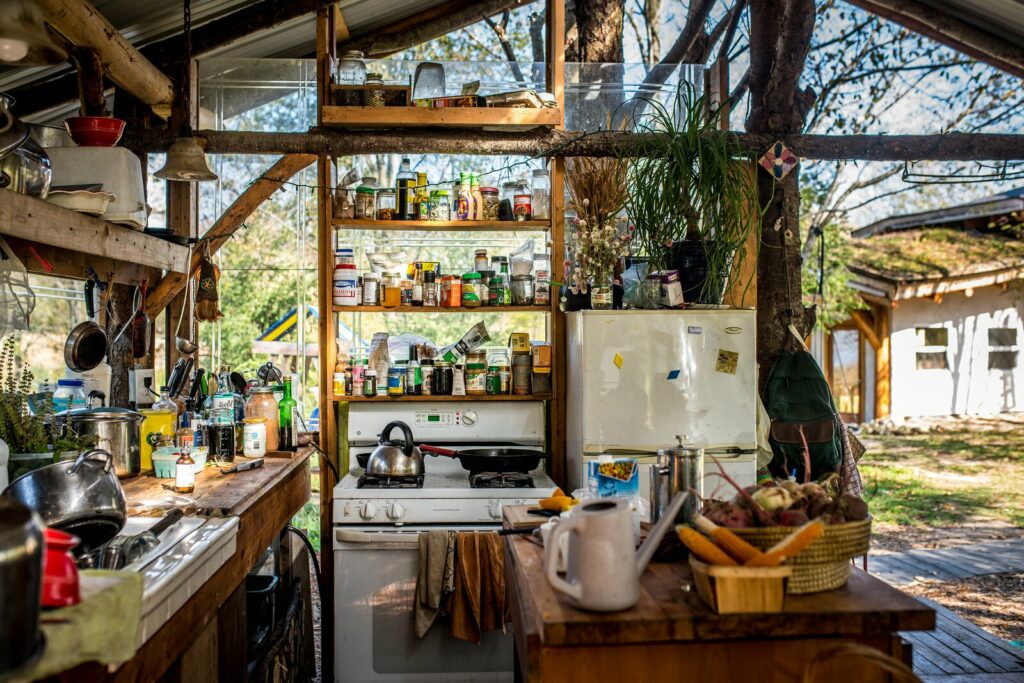 Before building their straw bale house, Touloupas and Pekarovic built this open-air kitchen as a test of the method. “This gets a ton of weather exposure,” Touloupas says. “We’ve never had any issue with moisture or anything.”But it seems like there’s more behind doing this instead of hiring a bunch of contractors to build the usual house.
Before building their straw bale house, Touloupas and Pekarovic built this open-air kitchen as a test of the method. “This gets a ton of weather exposure,” Touloupas says. “We’ve never had any issue with moisture or anything.”But it seems like there’s more behind doing this instead of hiring a bunch of contractors to build the usual house.
 Larissa runs their “farm school” program, where kids come out once a week, June to September. Each student gets a garden plot, some donated seeds, and seedlings and is guided through a season of growing things. She’d like to make the farm a spot for education. “I’d like to become a nonprofit,” she says. Students learn about plant life cycles, soil health, seedlings, and photosynthesis, “sometimes we teach fire building or natural primitive skills. We have a beekeeper come and do a demonstration. This year they made herbal first aid kits.”
Larissa runs their “farm school” program, where kids come out once a week, June to September. Each student gets a garden plot, some donated seeds, and seedlings and is guided through a season of growing things. She’d like to make the farm a spot for education. “I’d like to become a nonprofit,” she says. Students learn about plant life cycles, soil health, seedlings, and photosynthesis, “sometimes we teach fire building or natural primitive skills. We have a beekeeper come and do a demonstration. This year they made herbal first aid kits.”
 Solfed operates as a CSA (community-supported agriculture) outlet that sells produce directly to customers. “Once a week people come out here, and they pick up a share of produce. I feel that the universe gifted us all of these resources and gifts and energy to be able to do this,” Larissa says. “Every day I wake up and I come outside and I feel so blessed to be able to see greenery and hear the sounds of the birds, and see turkeys flying away, and deer frolicking.”
Solfed operates as a CSA (community-supported agriculture) outlet that sells produce directly to customers. “Once a week people come out here, and they pick up a share of produce. I feel that the universe gifted us all of these resources and gifts and energy to be able to do this,” Larissa says. “Every day I wake up and I come outside and I feel so blessed to be able to see greenery and hear the sounds of the birds, and see turkeys flying away, and deer frolicking.”


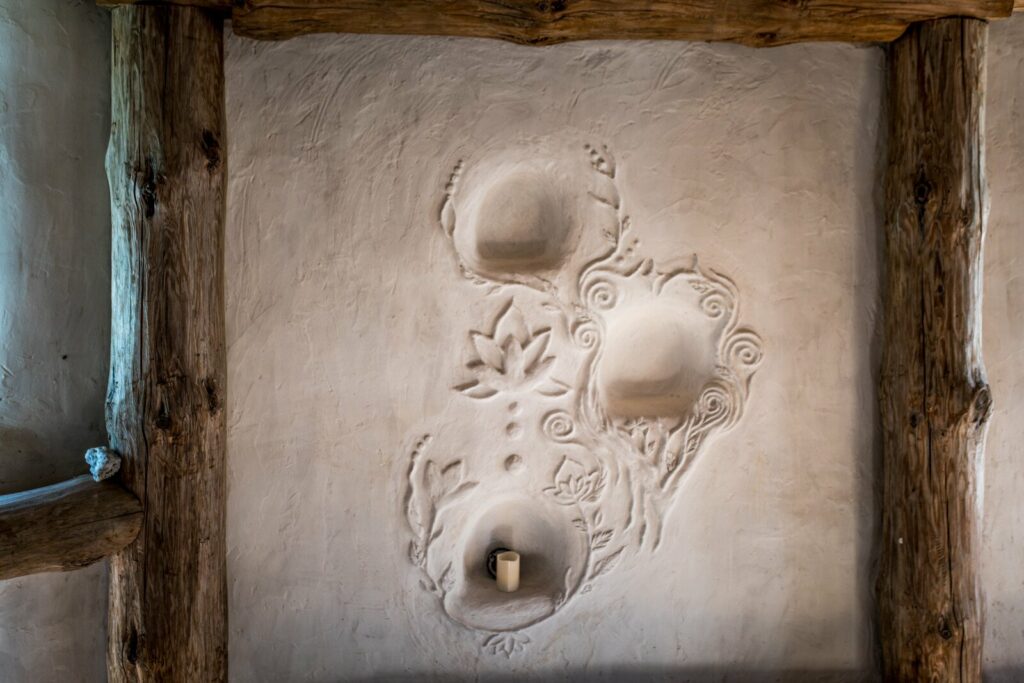 You can read the original article at
You can read the original article at
Came across your web page while searching sustainable living. What caught my attention 1st is you live in Michigan. So do I 😊 Your about 200 miles South of me.
Love what your doing. Gardening plots for kid’s. Hands-on learning and having fun. Something they will never forget, and hopefully use in their futures.
Your strawbale house is Awesome! Such an art from the heart and stability strong 💪.
I too am off grid. Solar panels and a tiny generator to charge batteries during winter when the snow is too deep to safely climb the ladder to clear off solar panels. Containers gardening. Plan to build an underground earthbag root cellar this summer 2025.
Would enjoy driving down to your place this summer for a visit, and help out wherever you need me😊
You can connect with Solfed Farms at https://www.instagram.com/solfedfarms/